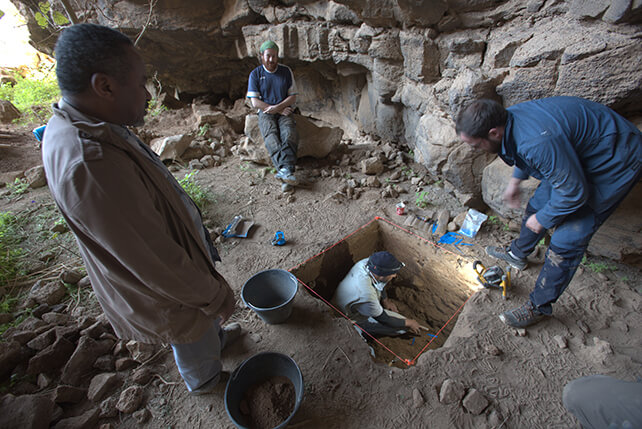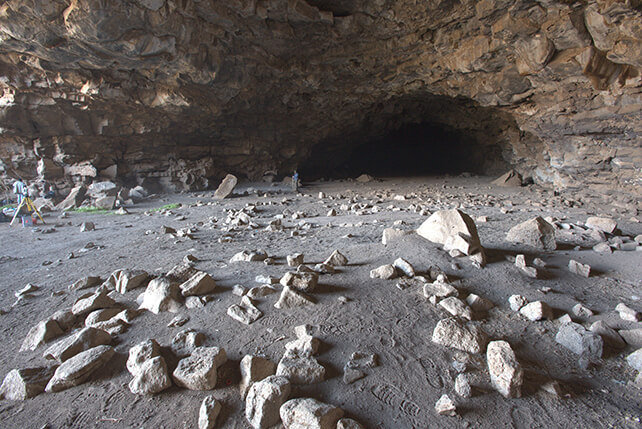HARRAT KHAYBAR, Saudi Arabia — Scientists appear to have uncovered a hidden chapter of human history — inside a massive lava tube in Saudi Arabia. It’s the first evidence that ancient humans occupied these giant caves formed by volcanic activity in the Middle East, giving modern-day scientists a glimpse into the lives of early desert dwellers.
Lava tubes, naturally formed underground tunnels left by flowing lava, have not been extensively explored archaeologically in Saudi Arabia until now. Umm Jirsan, stretching over a kilometer long within the ancient lava fields of Harrat Khaybar, has proven to be a treasure trove of historical significance. The findings from this site offer unprecedented insights into the region’s prehistoric human activities, challenging our understanding of how ancient communities adapted to harsh environments.
The research, spearheaded by Matthew Stewart and his colleagues from the Max Planck Institutes and several global universities, shows that Umm Jirsan served as a seasonal refuge for pastoral communities. According to the findings published in PLOS ONE, these early inhabitants left behind a wealth of artifacts, including stone tools, animal bones, and even ancient rock art, which tell stories of survival and adaptation in an unforgiving climate roughly 3,500 to 10,000 years ago.
“This site likely served as a crucial waypoint along pastoral routes, linking key oases and facilitating cultural exchange and trade,” says Dr. Stewart in a media release.

What makes Umm Jirsan particularly fascinating is its continuous use through various prehistoric periods. From at least the Neolithic through the Bronze Age, people returned to this lava tube, drawn by its protective embrace and perhaps its spiritual significance. The cave’s internal environment, naturally regulated, offered protection from the scorching heat and preserved organic materials that are rarely found in the arid surface conditions typical of the region.
The archaeological team excavated different sections of the tube, unearthing layers of human history. They discovered lithic (stone tool) assemblages that include tools made from obsidian — a volcanic glass — suggesting long-distance trade or travel. The presence of obsidian points to a network of exchange and interaction across ancient Arabia, connecting Umm Jirsan’s inhabitants with distant communities.
Perhaps most intriguing are the remnants of rock art found within the cave. These engravings, which depict various animals and human figures, provide a visual narrative of the cultural and economic practices of their creators. The art suggests that pastoralism—raising livestock like sheep and goats—was a key part of life here. Such depictions are invaluable for understanding the symbolic and practical importance of animals to these ancient peoples.


Isotopic analysis of animal bones offered further clues about the diet and mobility of both humans and animals in the area. The team’s investigation reveals that the early pastoralists practiced a mixed subsistence strategy, relying on both wild resources and domesticated animals. This dietary flexibility was crucial for thriving in an ecosystem that could fluctuate dramatically with the seasons, according to the researchers.
“While underground localities are globally significant in archaeology and Quaternary science, our research represents the first comprehensive study of its kind in Saudi Arabia,” adds Professor Michael Petraglia, Director of Griffith University’s Australian Research Centre for Human Evolution (ARCHE). “These findings underscore the immense potential for interdisciplinary investigations in caves and lava tubes, offering a unique window into Arabia’s ancient past.”
Article reviewed by StudyFinds Editor Chris Melore.

